HMS Clyde was expected to be taken over by Brazil once the Royal Navy lease expired however this transaction was declined by the Brazilian navy and instead HMS Clyde is now part of the Royal Bahrain Naval Force.
HMS Clyde is now RBNS Al Zubara.
HMS Clyde is the fourth vessel of the River class, with a displacement of 2,000 tonnes and was decommissioned on the 20th of December 2019 at HMNB Portsmouth and was returned to her owners at BAE Systems Maritime – Naval Ships, although HMS Clyde remained under lease from BAE Systems to the Royal Navy until the end of March 2020.
ex HMS Clyde is now part of the Royal Bahrain Naval Force.
RBNS Al Zubara.
May god bless her and all who sail in her. https://t.co/NoPQdGJF67
— Carry On Strategy (@CarryStrategy) August 7, 2020
HMS Clyde was part of the Royal Navy’s Fishery Protection Squadron. The Offshore Patrol Vessel was designed and built by BAE Systems and was leased and operated by the Royal Navy, while the company provides maintenance and logistical support to the vessel.
HMS Clyde was replaced by a new Batch 2 River class vessel, HMS Forth.



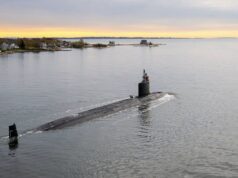
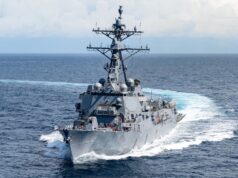
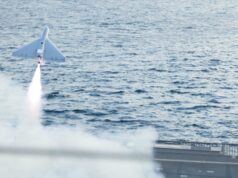
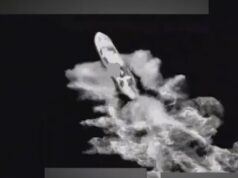
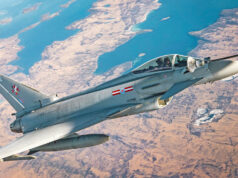
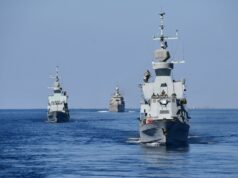
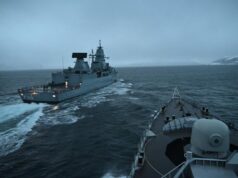
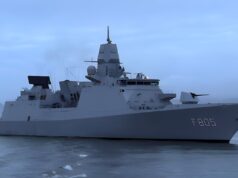
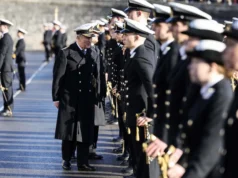
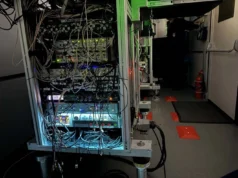

Should become a familiar sight to RN NSF. Interesting to see if Bahrain upgrade it at all.
They will probably stick some anti-ship missiles on it and call it a corvette. Not really the intended role but it probably won’t matter.
It’s almost Guaranteed she will have a new weapons outfit and systems upgrade.
Who cares? Another useful asset given away. Deja vu.
It was never owned by Royal Navy just leasef.
A bit of a pedantic point Simon.
Not really, it wasnt the UK Government’s property, at best they could have just continued the rental of it, but with the other Rivers why? Does the RN have spare crews for it?
Exactly. Just renew the lease. We’re going to need all the PV’s we can retain/build. It’s hardly crewing the QE.
The RN ha entire ships laid up due to lack of manpower not so long ago, all that solved?
HMS Monmouth is laid up still!
Not sure is She waiting for, or will get LIFFX, maybe GB knows?
Her Sea Wolf is due out of service at end of this year.
Type 45’s are a bit scarce at the moment due to PIP, deployments and routine maintenance and refit work.
Funny in Australia our OPV’s are getting Bigger and more numerous and no Government here would dare dream of selling one off . Australian Customs lie in bed at night unable to sleep as they’re fleet is mercilessly ravaged by the Navy telling the Government more for them means less of you know what . Oh and the RAN might as well be called the BPF as it is you people from the UK who crew it .
I have noticed a lot of Brits on the ANZACs when they come in a visiting . I even know a few of them! Unfortunately COVID restrictions have put a dampener on call rounds and DTS’s
Note ‘leased’ – not ‘our’ ship, it was owned by BAE and the lease expired! Also, this one at least has a replacement.
Agreed!
“TopBoy” The three batch 1 Rivers have been regenerated and have rejoined the fleet.
In addition the navy is getting a further 5 batch 2 River class most of which are already serving in various locations. This is a plus for the RN in terms of the OPV’s.
Didn’t you know this ?
The 3 Batch 1 River class have been regenerated and are now back in the fleet. The RN is taking delivery of a further 5 Batch 2 River class ships which are already serving for the most part.
It’s been a positive for the OPV fleet in recent years.
Do you get paid to say these things ??
First serious effort in up-arming her is the entertainments pavilion on the recreation deck…errr helideck. I say, anyone for Pimms?
…and there was I, thinking it was a gulf-style folding hangar…..
Hi Gunbuster…Is this work being done in UK….. do you know…..?
Hmmmm…not sure that we still have the art of fitting guns to ships anymore. If they ‘stick’ some on in Pompey, look out for a local run on superglue 🙂
BAE Systems? Bofors?
Won’t be BAe
.Leonardo have just updated all the other BDF vessels with new radar, trackers command systems and optical systems so they may be favourite.
Going to be interesting to see how they arm it, to see what the potential for the batch2 is (i know they are a bigger than Clyde but gives an idea)
the sanitising work is in UK
The rest of it in BHR.
A crisp conclusion to the RN OPV project. From Clyde plus 3 River 1s to 5 global River 2s and 3 refitted R1s for UK waters. Nice work.
Looking at the current age and disparate nature of the inventory of the Bahrain navy I would say former HMS Clyde could be the sales prototype for run of several River 2s fitted out as a fleet of Royal Bahrain Naval Force corvettes and maybe a few Wildcats. Who knows?
We might even sell them our old batch ones…
Eventually
The ultimate in privatisation – leasing a warship. Best keep up the payments or the baliffs will be round….
I think it works like ‘buying’ a house from a developer. You pay for a lease, then you pay ground rent and you pay to extend the diminutive lease on a depreciating asset. To paraphrase Full Metal Jacket , in the UK the (financial) wind doesn’t blow, it sucks.
Indeed. As you said, not Brazil.
Thought you’d have a handle, G. It has the obvious potential as a win-win for both Bahrain and RN, with close cooperation. Another known OPV alongside our assets. Smart move.
Regards
Is there a reason why anyone should be surprised if it is not upgraded. It’s 2nd hand and cheap, so they will have some money to spare. And it’s basically a capital ship for them.
They’ve more than I was aware of. Interesting to know the rationale for Clyde per se. Good on the old girl anyway; slightly less hull strain I’d think.
Capital Ship?
They have an Ex USN OHP, couple of helo carrying Lurssen Corvettes and a shed load of FAC missle boats armed with M40 Exocet, and a mixture of 76 Oto and 40mm Breda guns. Add to that MKV SOC Boats, Landing Craft and other smaller Patrol Boats and its quite a potent force for a relatively small island.
I should always refrain from sarcasm, it serves me right.
I wonder why it was rejected by the Brazil navy.
They bought 3x 90m “Amazonas Class” OPV’s in 2012-13, which are based on the batch 2’s.
The article seems to indicate the decision to pull out was more recent than 2013 though.
Yes, from what I gather the 3 sold to Brazil were originally intended for the Trinidad & Tobago Coastguard. They (T&T) pulled out before delivery, and the vessels were quickly sold to Brazil, who at the time expressed an interest in “up to 5 more”. ex-HMS Clyde is a Batch 1 though, so smaller and older than the 3 Brazil already have. It most likely wouldn’t support the “package” that they have on their 3, and so would be a bit of a white elephant to them.
And there is the point that Gunbuster makes – they have bought MEKO-100’s which are larger yet and more capable.
Because Brazil is getting four of these
Meko 100s
https://www.navalnews.com/naval-news/2019/04/germanys-meko-a100-won-the-brazilian-navy-tamandare-corvette-competition/
Interesting. The graphic shows the Brazilian Meko 100 spec as carrying the BAE Artisan radar.
And Sea Ceptor
and costing less than £20m extra per ship over the batch2.
Just shows how badly the RN got messed over with the order. I get there was a contract to give so much work to BAe, but surely we could have optimised that money a lot better. If the money couldn’t have gone to weapons, because they wouldnt’ have been supplied by BAe it could have gone to a much bigger ship with a hanger and better room for upgrades.
Well, regarding the River 2 cost to quote the Bard, what’s done is done, and cannot be undone. BAE had neither the skills and facilities nor the design to build the Type 23 replacement. So what we have ended up with is a doubling of and capable OPV fleet and a destroyer sized FFBNW Type 31 patrol frigate from Babcock. Overall not a bad outcome. Good growth platforms with long legs.
Since Brazil have bought 4 Mekos with Artisan and Sea Ceptor I assume that we will soon see 4 Type 23s being stripped of these; and sensors and engines removed for Type 31 before being towed to the scrap yard.
Not really we ended up with marginally better than the river1 that are now being sold. What we should have done was keep the river1 and paid BAe to redesign the river2 to include a hanger and capability for silos and just brought 2, to avoid cut overrun.
Steve, I don’t think R2 is ‘marginally’ better than R1. It is a substantially larger vessel with longer endurance, has accommodation for 50 RM and medical facilities; it has a large cargo area/ flight deck, an armoured magazine; it can refuel and rearm a Wildcat and has a warship standard CMS and light but integrated armament for constabulary work and self defence against FIAC. It is really a new class of ship – with growth potential. Also, I assume that when the RN paid BAE to design R2 without a hangar but with a crane it made a conscious decision.
I think I recall at one point in the past the RN conceived the notion of a fleet of 3 ‘ frigate’ types; C1, C2, C3. Maybe they never dropped that ambition ….T26, T31, R2?
You are Wrong, on the T23s being stripped of sensors for T31!
The T31 is having a new type of radar and new sensors. And new engines have been ordered for all T31s. The 23Ts,GPs, will be sold.
I meant the T23 are being stripped of their radars for the Brazilian Mekos?
Only 2 T23(ASW)s will Not have had full LIFEX, No PGMU, they will be replaced by T26 from 2026/7. 6 T23(ASW)s are receiving full LIFEX with PGMU extending their life spans into the 2030s.
Those 2 are one’s most likely be stripped of equipment for later T26’s.
I forgot to name them, HMS Westminster and HMS Northumberland, to be replaced by first 2 T26s.
Yep, given the glacial build rate for T26 I am ok with the T23 Lifex program: it has to focus on the ASW ships to maintain that capability. It looks like the GP frigates will be replaced by T31 at a faster rate. Overall we will need 8 Artisan sets for the T26 which leaves 5 going spare. Keep one for spares say and sell 4 to Thyssen Krupp / Brazil for the Mekos?
If HMS Monmouth does not get LIFFX by end of this year, she could be stripped of equipment. Her Sea Wolf missile system is due OSD at end of this year.
Maybe GB knows will she get LIFFX?
” BAE had neither the skills and facilities nor the design to build the Type 23 replacement. ”
Riiiiiighhttt….
So BAE Systems designing then building the Type 26 Frigate in their Clyde yard has totally passed you by Paul.P?
Hi F, that was then, this is now. I understood the received wisdom was that R2 was the vehicle for rebuilding lost skills etc.
By the way, I’m not a BAE sceptic. Fantastic engineering company….just not trusted by our faithless and indecisive government machine.
“I understood the received wisdom was that R2 was the vehicle for rebuilding lost skills etc”
From who? That is not even remotely the Reason for River Batch II being built. The issue was keeping BAE Systems Clyde busy under the terms of the TOBA signed between the company and UK Government. With the end of Type 45 production and the final super Blocks for the QE class being delivered the yard had nothing to do for several years until Type 26 started build. The TOBA required BAE Systems to paid to keep the yard open and rather than do nothing the MOD preferred to order something. The only design available in short notice was the Amazona class that was then adapted into River Batch II. The RN didn’t particularly need or want the R2 but wouldn’t turn them down and planned to retire River Batch I plus end the lease of HMS Clyde so as not to end up with an over sized Fisheries Protection force they would struggle to crew.
Ironically due to staff being transferred up to Rosyth to support the QE class build and fitout a large number of contractors were used on R2 leading to later problems that needed rectification.
And same cell numbers as T31.
Given that the T31 is said to be getting a Thales radar (NS100 or maybe NS200 – do we know which yet?) that will leave the UK with a few spare Artisan that we thought were going to be cross-decked to T31 as our T23s were retired. I wonder whether timing might allow us to sell 4 of our unused Artisan to Brazil.
And on that subject I am still really perplexed that if things don’t change the T31 might actually end up with a better radar than the T26. DaveyB has posted, if I remember & understood some of his old posts correctly, that even if the T31 radar is “only” the NS100 that is still a better radar than Artisan. Surely that’s a bit crazy isn’t it?
What I really wish would happen is that BAE would get the funding it’s asked for(*), a very modest amount of money I seem to remember, to develop a family of products to succeed Sampson so that we could retain state of the art radar capabilities in the UK, as we had when T45 was being designed, to have the best possible high-end radar for AAW and also have scaled down (cheaper) versions that could be used on more minor vessels. This really is a technology area where we should be building on what was a best-in-world position rather than letting the expertise whither away.
(*) DaveyB (I think) posted a link quite a while ago to a letter BAE sent asking for funding to retain UK radar expertise and develop the next-generation Sampson
I’m not convinced NS100 is a better radar than Artisan especially for the presumably cluttered ‘estuary’ environment of the mouth of the Amazon. The Brazilians may have been prepared to pay a premium for Artisan. Maybe the simple explanation is that NS100 plus mast plus CMS integration is just cheaper, ensures that the Type 31 cost stays below £250m a pop and is all you need for a junk buster patrol frigate?
I’ll try to be as succinct as possible. The NS100 is developed from the Thales Smart-S and Sea Master 400 radars. It uses the transmitter-receiver modules that are based on new Smart-MM AESA radar (just uses less modules) and operates in the S band (old E/F). The NS100 has a published instrumented range of 280km (Thales have not specified what the target was though!)
There are two key differences between Artisan and NS-100, the first is age and the second is the transmitter/receiver type. Artisan was a development from the Type 996 radar, itself a PESA system. It was fitted to HMS Iron Duke in 2013, but had been in development since 2000. Artisan is a significant leap forward in capability over the previous Type 996 radar. This is down to the antenna packaging but more importantly processing power. NS-100 being a development of Sea Master was has been in development since 2015. For processing alone 15 years is a huge gap, Artisan has been getting some processing and software upgrades, but NS-100 is newer and state of the art.
I have talked before about the pros and cons of AESA vs PESA. AESA is a step change in capability over PESA. Artisan has proven to be very effective in the littorals, NS-100 will have that and more, due to ability to transmit multiple beams simultaneously.
I really cannot understand BAe’s business model. It’s like they won’t do any R&D for themselves from their own budget, but only if the Government will pay for it? They have lost ground to other companies in a lot of product areas, over this refusal to continuously up date their products, instead they’d rather go down the less risky road of buying out competitors.
The Artisan could have easily been replaced with a single Sampson antenna array or a scaled down pair, if the Navy were concerned about costs. This would be significantly better than Artisan and at least be on par with the Thales NS-100 competitive wise. It would have included the maintenance and training on a system that is already in service. The Sampson system can be significantly improved, yet there doesn’t seem to be any impetus to do so?
Davey, Lots of points there, technology and business.
Regarding BAE business model it seems to me that shifted a while back FROM working an adversarial relationship with a UK government which has a constitutional aversion to both trusting engineers and the very concept of a national industrial strategy TO working with the US culture which respects technologist and engineers plus acquiring technology where appropriate. ( This is not dissimilar to the French national industrial strategy…).
Regarding radars I am educating myself with the basics. I’m thinking that notwithstanding all the AESA multi-beam stuff Artisan might be as good or maybe better value for money in some respects for a naval application where you are sailing in the crowded mouth of the Amazon estuary…basically scanning coastlines and identifying movements all the time. Otherwise why would the Brazilians spec it for a brand new ship?
Have a nice day!
Brazil have the late HMS Ocean, she was sold to them with Artisan, so they probably have a good feel for it. The majority of Brazil’s Navy is tasked with border patrols, so a radar that works in the littorals will be an advantage. Artisan has a good track record when working coastal and is probably cheaper to purchase than NS-100. However, it is still a PESA radar and therefore will still suffer significantly more clutter than an AESA system. The reason for this is twofold. One is the oscillator centre frequency and secondly the transmission beam width.
PESA radar system generate their transmission frequency from a single oscillator. This may have a wide-ish operating band, so if it operates in the S band it will transmitting in the region between 2 to 4GHz (15 to 7.5cm). This frequency, converted into a “pulse” and then amplified, is feed down some waveguides to the transmitter elements on the planar antennae. The elements are time delay circuits. These alter the time the pulse is transmitted. By using addition and interference you have effectively created electronic beam steering. However, because you are using one oscillator to generate the frequency, the radar will be fixed around this centre frequency.
Modern systems like Artisan can do frequency hopping where the oscillator is electronically tuned to a new frequency. But, what is delivered to the antenna can only be in one frequency and thus you cannot transmit using multiple frequencies. You can however transmit multiple beams at different angles, using the one frequency, but now you have significantly ramped up the price. As now your processing has to handle and account for mutual interference from using the same frequencies, but at different angles.
AESA is whole different kettle of fish. There are now three main elements, the transmitter/receiver module (TRM), the processor and memory, included would also be a form of cooling, power supplies etc. To transmit a frequency, the transmitter/receiver module will contain an oscillator, waveform generator and amplifier. At the front of the module will be the antenna, usually a flat horn. This means all the construction and transmission of the pulse is generated within the module. There will be a very short length of waveguide less than 10cm compared to say Artisan where there’s metres of waveguides. AESA uses the same process of beam adding and interference to generate the beam power and steering of the beam. But because each module is a separate radar in its own right you can now manipulate the beam in a lot more ways.
All radars generate sidelobes, its a given with any antenna. These sidelobes are wasted energy and can be used to spoof the radar. There are active sidelobe suppression circuits, but the sidelobes are still being generated, just being suppressed and thus wasting energy. However, with an AESA radar individual TRMs can now operate on slightly different frequencies say a 1/8 or 1/4 wavelength away from the centre frequency or different phases. These interfere with the main beam and basically squeeze the main beam into a much narrower beam, the wasted sidelobes are also squeezed into the main beam so add to the total power. A PESA radar can generate a narrow transmitted beam, but compared to AESA its very wide.
So now we come to operating an AESA radar in the littorals, there will be a lots of clutter from coastal features, but also slowly moving targets like private craft, fishing vessels etc. We have established that the beam of an AESA radar can be made very narrow, much like a searchlight with a dispersion of just a few degrees. When an object is illuminated you will get a better signal return than a broader beam, so a truer image can be formed as there’s less ghosting, i.e. better angular resolution (less multiple returns). However, because you have the ability to operate all TRMs at different frequencies, you now have the option of multi-beam transmissions. This means you can use multiple frequencies to sweep an area.
Because you are now transmitting multiple beams you will need a very high end processor, as it has to stitch together a lot more information. However, because you are transmitting on multiple frequencies, it is now easier to filter out clutter and discriminate moving targets or fixed objects. This is one of the many reasons an AESA radar will be better than a PESA system. However, it will all come down to cost and especially the software that is used to piece together the data that the radar sees.
Very comprehensive. Thx.
A big driver for the 996 replacement was the replacement radar must not add to T23 top weight. They managed that with a heavier radar but designed a lighter mast top access arrangement. For a T23 a modified Sampson would never have worked as a T45 Sampson mast head unit weighs in at around 9 tonnes. The signal processing used on Sampson did feed into 997 though.
997 also needed to be a navigation qualified and capable surface radar for amongst other things Gunnery safety which is something 996 struggled at.
997 Below decks equipment is a lot smaller and it has a far lower cooling requirement than 996 so the usual issues about losing Chilled water are more manageable.
It is a good radar and performance is far better than 996 ever was.
it will be interesting to see what the comparisons are against the Thales set on a Thursday war.
G; Thx for this background. So if I was a salesman for Artisan my unique selling points would be ‘proven pedigree’ and ‘Sampson signal processing’.
The question though is why should the govt. fund additional speculative development of BAES radar? The MoD already funded the development of Artisan and especially AESA Sampson so why couldn’t BAES build on that? Companies worldwide are using their own resources to develop a suite of radar solutions and then going out and actively selling them. How many foreign sales have BAES had for their radars over the last two decades, or their Combat Management System software as another example? Compare that to companies like SAAB, Thales, Hensoldt, Leonardo, Lockheed, and CEA, some of whom started with govt. funded programs but then built off that to develop an export market for their products.
BAES, at least on the naval side of the business, seems to want govt. subsidies to keep their capabilities in place as with River-class TOBA. BAES don’t seem to have any interest in competing for foreign ships to be built in the UK in order to sustain those capabilities without subsidy. I suspect its this general approach in the naval side of BAES business that has led to a desire by MoD to engage with other companies, as illustrated by T31, because the BAES approach is just going to keep driving up the total cost of naval ships for the UK.
Good post which speaks to the culture of patronage which historically characterises the UK government machine, whether it be house development, pharmaceuticals or ‘consulting’. If Serco and Group 4 of Accenture had made frigates I’m sure they would have got the contract on a nod. To their credit and probably great relief BAE have ditched dependence on the UK for the US where the culture is enabling rather than stultifying.
4 of the T23(GP)s have already had or in LIFEX, So it is highly likely they will be sold with most their equipment. Just look at it this way, why LIFEX them so near to OSD?
The Brazilians operate 2 ex Type 22, 5 ex Type 21s and 2 corvettes, one of which is quite old. It looks like they are planning a new fleet starting with the Mekos. Be interesting to see if lifexed GP Type 23s will figure in their plans.
Brazil operate 0 Type 21.
Those that survived the Falklands war were sold to Pakistan.
Ok, I stand corrected. So what is their current order of battle?
https://en.wikipedia.org/wiki/List_of_ships_of_the_Brazilian_Navy
Agree on UK radar skills. Post Brexit HM Gov needs to have an industrial strategy for developing and/or acquiring strategic industries / technologies. More like the way the French do these things.
I see rotating Sampson as being to flat face ASEAs what Betamax was to VHS….sadly marketing power usually wins out over elegant technology.
Maybe a non rotating
triangle ASEA panel could give full 360 degree view, each one giving 120d.
Correct, Without the mechanical rotating assemble and the addition of a third AESA panel, the ship should be able to cope with the additional top weight.
Hi M, I don’t know. I’m just mugging up on this PESA AESA thing and comparing the Artisan and NS100 published data sheets. Despite being ‘only’ a PESA radar Artisan seems to emphasise ‘situational awareness’ and claims to have ‘unrivalled’ decluttering performance in the littoral. It also seems to be a good deal lighter in weight than NS100 whose data sheet is a bit light on detail compared to the Artisan data sheet. AESA radars seem to offer more advantages in aerial combat rather than the naval context, though I note that even there the RAF are in no hurry to move away from the mechanically scanned radar in Typhoon.
The sales brochures are going to play up the capabilities of ARTISAN/Type 997. It isn’t a bad system but the general prevailing view amongst those who understand the technology regard it as a cheap and cheerful system levering pretty old technology and there is better more modern stuff out there.
Unlike Type 26 which will use a large amount of Government Furnished Items stripped from Type 23 in its build the Type 31 will largely use systems and weapons that are new to the Royal Navy.
If you look into Europe Radar Developement is not standing still – Thales and Leonardo introducing the Sea Fire and Kronos Systems respectively.
Ok. Thx. So in wider context like sunsetting the Mk8 4.5in gun in favour of a new 5in and the 57mm and the adoption of a new CMS for T31 it looks like we are moving to a OTS purchasing strategy which treats frigates as commodities….and cyber as the circus act where you put development money.
There will always be a need to develop hardware. The best example is within the radars themselves. The majority of high end military radars today will use Gallium Arsenide (GaAs) in components to make up amplifies, filters and oscillators. They can handle substantially more power than silicon based versions. It took a while to get right, but they are now only slightly more expensive to produce than the Silicon ones. However, as power levels increased even GaAs components struggled, what’s more of an issue is that higher frequencies they generate RF noise. This led to the development of Gallium Nitride (GaN). This material can handle even more power, but more importantly as the frequencies rise it doesn’t generate nearly as much noise. It also has much faster switching speeds. The main issue is the cost of production and the high wafer failure rates compared to the more established GaAs. In the next 5 to 10 years the cost and failure rates of GaN will be similar to GaAs, by which time there maybe another wonder material.
The software used in a radar built around GaAs will work just as well in GAN radar. However, because the GaN develops significantly less noise it will be more sensitive, thus making the radar see either stealthier targets or targets further away. So the software will need to be enhanced to account for these improvements.
Interesting survey of these semi-conductors. Thx
It doesn’t matter if its sea, land or air, an AESA radar will have significantly better capabilities than previous generations of radar. The comparison would be like comparing a Mk9 Spitfire with a F86 Sabre. The Spitfire was pretty good at its job as an interceptor, but not in the same league as the Sabre.
If you look at both the T26 and the T31, both will only have one primary radar, Artisan and NS-100 respectively. This means that both radars have to do both volume searching of the air and when seeing a target, scan and track it. Both systems have their antennas rotated mechanically at 30rpm or once every two seconds. This means there is a dead zone following the radars as it cycles round. Most systems use a predictive tracking algorithm, which basically guesses where the target will be when it’s in the dead zone. So, in this case neither radar has an advantage.
Now the radar rotates back on target. Artisan as I’ve already mentioned can transmit at least two beams. So one can concentrate on the target where the other sweeps from horizon to the zenith. However, to do this it needs some pretty substantial processing, hence the link to Sampson. Now look at NS-100, it will do exactly the same thing as it sweeps over the target. So it can generate one beam to scan the target whilst transmitting another to sweep the sky. Doesn’t seem to be much different. However, we now have a much better control of the beam/beams and they have a much narrower angular dispersion.
As a rough example a PESA radar can sweep from the horizon to its zenith in a time of 1/2 second to a second. Conversely an AESA radar would have done maybe 20 even 50 sweeps in that time. Why does this matter, as I mentioned before, a PESA transmitted beam is quite broad compared to AESA’s (e.g. +/- 10 degrees compared with +/- 3 degrees at 50km), so if you had a pair of aircraft flying close together, they may appear as one. By sweeping the target multiple times as fast as as the AESA system can handle, means the radar will receive more data. From this and combined with a much narrower beam means there’s better target discrimination. as we now have better target resolution. If the system has the processing power it could use the vast amount of data to form an image of the target. It won’t be high definition as the wavelength of either of these systems are too long. But it would be enough to identify what the target is.
AESA is much better countering jamming and spoofing. This is due to the radar being what is called “a low probability of intercept” system. As each of its TRMs are a digitally controlled radar in their own right, means it can change frequencies very rapidly over a much broader bandwidth within the radar band. Therefore, for RF detection systems, this rapid frequency hopping makes it much harder to initially detect and then to follow. A PESA system because it has one central oscillator means it is slower to sweep through its frequency range and has a much narrower range of frequencies that it can use. Thus making it easier to detect and then track.
I can’t answer why the RAF have yet to upgrade the Typhoon with Captor-E. There have been lots of rumours flying around about the significant capabilities that the F35’s APG-81 has when compared with the basic Captor-E. It is quite plausible that the reports coming back from pilots and engineers working on F35 have made the RAF push for the more capable Radar 2+ version, which is supposed to match APG-81.
Thx. I get the changing frequencies / side lobe suppression / low probability of intercept points.
Regarding narrow beams and resolution of targets wouldn’t the PESA radar have an advantage in that all its transmitters are by definition in phase, especially the cells at the edges of the antenna. The beam it transmits would also be more powerful wouldn’t it, if all the transmitters are deployed to the same frequency? Also I seem to recall that angular resolving power varies as the distance across the transmitter / detector. Bigger telescopes / aerials are better.
Yes, the bigger the antenna square area, the bigger the gain (amplification), but also the more sensitive the antenna is to detecting fainter signals. Both the PESA and AESA uses electronic beam steering. To do this with PESA you use time delay circuits, which change the phase of the transmitted wave. So as the signal is transmitted you have the parts of the signal fed to the antenna elements at slightly different times, the summation changes the direction of the beam, by basically pushing the beam over. AESA is no different in this regard, it uses the same techniques to steer the beam. The difference is that with PESA, it only has the one main oscillator to generate the frequency, you now need splitters and waveguides (you can use coax, but only for low power) to feed the signal to the antenna elements. You now have incurred losses, which are generated by the high power RF warming up the waveguides varying the resistance. If the radar is really powerful, you will have to consider a method for cooling the antenna feeds. To make matters worse, you now have to introduce some method of getting the high power signal to the antenna elements through a rotating mechanism.
For an AESA radar, the transmitter and receiver oscillator, amplifiers etc are all contained within the transmitter/receiver module (TRM). The main inputs to each module would be power supplies and signal control. There would then be an output signal line, which lately is a combined input and output data-bus. From the transmitter amplifier there be a number of filters, but attached to these will be the antenna horn/notch. The designer will try to keep the distance as small as possible to minimise losses. It is predominantly this reason why AESA radars are more efficient than the previous generations of radar, i.e. the removal of the long waveguide paths, splitters and rotators. Therefore for the same antenna size and all other things being equal, an AESA radar will be more powerful and sensitive than a PESA radar. What will really blow your mind is that some TRMs contain more than one pair of transmitter/receiver sections and that each can either be transmitting on the same frequency or different ones being fed out the one antenna element.
Both flat panel active and passive arrays suffer the same problem with the field of regard (field of view). Because you are using a flat panel and in essence bending the beam over when transmitting, you are realistically limited to a horizontal view of +/- 60 degrees and in the vertical +/- 45 degrees. It is technically possible to go slightly further, but the costs are exorbitantly expensive in processing power. Especially when you also consider, you now have to process the returning signal, which will be getting more acute, thus causing signal ghosting as the angular resolution gets worse. This is the main reason why Captor-E has a mechanical swash plate to alter the antennas position, and thereby increasing the radar’s field of regard. It is also why on ships that use a flat panel radar, there are a minimum of three panels, thereby covering the whole 360 degrees.
Davey, great info on the architecture and modules ?. Thx. So in my simple mind I can see how if you have a flat panel radar it has to be ASEA simply to be able to scan horizontally. And as you say you will need at least 3 of them. But if your radar antenna rotates the old fashioned way ( not withstanding the side lobe suppression and frequency agility/ probability of detection advantages etc ) then the ability to scan electronically is something you only need if you are using the radar to communicate target information to a missile for example while you continue your ‘business as usual’ situational awareness and target identification.
Not quite. As you’ve mentioned having a fixed antenna to electronically sweep the sky is great. A huge volume can be swept in less than a second. However, with the T45’s Sampson you are also rotating a pair of antenna mounted back to back at 30 rpm. This adds complications to the processing, as every degree of rotation including the beam or multiple beam angles must be taken into consideration. For an old mono-pulse doppler radar using a flat panel antenna the beam is perpendicular to the centre of the antenna, i.e. the same as the beam from a lighthouse.
Rotating an AESA antenna does have one advantage over a fixed panel AESA. For example, if the ship is stationary and a low level target is approaching directly towards the antenna, you will get a certain amount of returned signal. With a fixed panel it will be just the signal return that it sees almost directly along the flight path from the radar to the target.
Now consider Sampson, it’s rotating where one antenna sweeps 360 degrees every 2 seconds or 1 second as there are now a pair! But Sampson is an AESA system which gives you electronic beam steering and multi-beam capability. So yes, the target will be illuminated along the flight path just like any other radar. Consider though that as the antenna rotates, the beam can be made to track the target as it rotating. Imagine travelling on a train and watching an object out the window pass you by, its exactly the same principle. As the target passes into the dead zone, the second antenna will then search for and then track the target, keeping the beam illuminating the target as it rotates and then passing it on again to the following antenna. What you have introduced is a measure of angular displacement along the target’s path. Admittedly from distance it won’t be a lot, but as the target gets closer, so does the displacement angle. Therefore you can glean a lot of information about the target as it approaches compared to a fixed panel. This process is called track while scanning. It also mitigates to a degree, the two 60 degree rotating dead zones that Sampson has.
However, the downside to this, is that it requires a lot of processing power, which thankfully the T45 has. The T45’s Sampson will not only track the one target as it approaches, but it will to continue scanning the sky and tracking well over a 100 targets that approaches it. This is mostly due to the very high sweep rates AESA gives you, but also because a lot of thought and money went in to the signal processing.
So is NS100 sort of half a Sampson?
In a manner of speaking. NS-100 is based on the Thales Seamaster 400 and is said to use the TRMs from the SMART-MM. The number of TRMs contained with the area of the antenna array determines a lot of the radar’s performance. The majority of manufacturers will give a figure like 500 etc. The actual number of TRMs are usually higher.
The question of whether NS-100 is half a Sampson is no. Sampson is made by BAe and NS-100 by Thales. However the operating concepts are exactly the same and the NS-100 will benefit from using more up to date processors. It will have a longer dead zone compared to Sampson, as it only uses the one antenna face.
Is Typhoon’s Captor radar still only 120 degree field of view?
Which one, the Captor-M or the Captor-E?
The Captor-M is a multi-mode pulse-doppler coherent radar that uses a flat planar antenna. The planar antenna is fitted to x and Y axis gimbal motors that can sweep the antenna very quickly. It has a pure look-up and look-down modes. This is where the antenna can be position to look up at an angle of 60 degrees and visa versa. The antenna can also be made to sweep in these positions, i.e. look left and right. In the horizontal mode the antenna can sweep left to right to +/- 80 degrees to a give a forward field of regard of 160 degrees (from published data, it may be more in real life).
Captor-E is a multi-mode AESA radar, it can generate all the waveforms of the Captor-M plus many more. In a fixed position the AESA antenna has a field of regard of +/- 60 degrees horizontally and +/-45 degrees vertically. This is clearly worse that the mechanical radar, so a swash plate was introduced. This is different to the gimbal mounts as it won’t suffer the same issues of wear due to the high stop-start loads placed on the mechanism. Instead the array is mounted onto a swash plate. This will add an additional +/- 30 degrees (published) to all axis. Thus giving it comparable fields of regard to the previous mechanical Captor.
Having an AESA radar with a much higher field of regard gives both the Gripen E/F and Typhoon a distinct advantage against other AESA equipped aircraft in off-boresight combat.
MEKO aka built by the group inc Atlas Elektronik who offered a Ship design for T31e and lost out!!
The MEKO actually looks good
And its got a decent weaponry